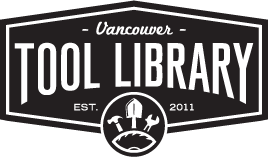Before being an exchange student for one semester at UBC, I used to live at home with my parents where, like the average families, they had a nice and complete toolbox. However, the other day I needed a screwdriver. The fact that I didn’t have at my disposition the family toolbox made me wonder: How many times per year do we actually use that box? Is it worthy for me to buy a screwdriver that I will barely use?
Simultaneously to this, in class, we started to discuss the concept of Customer Solutions by setting the product in the heart of sustainability. The question we made ourselves was: Can we shift from goods to services? While having this conversation, I realized that a company renting tools instead of selling them is precisely what I needed at that moment. That would be a way not only to avoid paying the high prices of buying one of these goods but also, a way to give further life to a product that otherwise would have been uselessly laying somewhere in my room.

Consequently, I searched on the internet in case I could find this type of service somewhere in Vancouver. And, surprisingly enough, I found it: It is called the Vancouver Tool Library (VLT). They decided to make their business model more circular through the concept of “Products as services”: this happens when goods vendors embrace the idea of themselves as service providers, leasing access to and not selling ownership of a product.

All in all, VLT is a cooperative tool lending that loans a wide variety of tools for home repair, gardening, and bicycle maintenance. They also offer affordable workshops on tool related skills and projects. This type of business model is an effective hedge against cost volatility and resource sacristy. Nevertheless, I believe they face a great challenge in terms of convenience and creating a change in consumer behavior: it will always be extremely convenient in consumer mind to have this tool directly at home, even if being conscious of the little use you will give to it and the significantly higher cost compared to simply renting it when needed. This is the controversial trade-off in the consumer’s mind: commuting and convenience vs. lower price and sustainability.
VLT’s mission:
“We are motivated by a vision of our community empowered by the tools and skills needed to transform their homes and communities into vibrant spaces that reflect a commitment to sustainability. To get there, we are creating a community resource that will reduce the costs of improving and greening the places in which we live, work, and play.”
VLT Webpage: http://vancouvertoollibrary.com

Hey Núria! Thanks for sharing this post. As I am also an exchange student I have indeed realized how convenient the concept “product as a service” is. During Reading Week I did a short trip with only carry-on luggage and needed a backpack for traveling. I was already looking online to buy one but I was quite opposed to purchasing a new one as I have one in Austria that is perfectly fine (I just could not bring it to Canada as I already had so much luggage). After some research I found out that you can rent all kind of sports gear at the Varsity Outdoor Club if you become a member. This was the perfect solution for me and as an outdoor enthusiast I will definitely also take advantage of this when I go skiing or snowshoeing in the future.
Thanks for sharing Vancouver Tool Library. It is going to be useful for me too, as I don’t have any tools here in Vancouver.
This tool sharing initiative shifts the way we consume several products. With this, we all are taking a benefit: no need to spend money on a screwdriver and material waste reduction. It also encourages more people to fix products: don’t throw it away; fix it!
If I ever need a tool in my Housing residence I know where to look for it now!
Hi Nuria! Thank you for sharing this! I feel like the sharing economy has become so important in this day and age as most of us tend to prefer living minimalistic lifestyles and are aware of our impact on sustainability, as well as the key fact that it is becoming more expensive for Millenials to live, in comparison to our earnings. I think this model can be ablied to so many more aspects. I actually read this interesting article a while back – may be a cool read for you too : https://www.innovationtactics.com/sharing-economy-1/.